Video of the Week:
Growing Vegetables in Containers
John C. Pair Center Job Announcement
http://careers.pageuppeople.com/742/cw/en-us/job/493138/agricultural-technician-senior
Turfgrass:
Keep Mower Blades Sharp
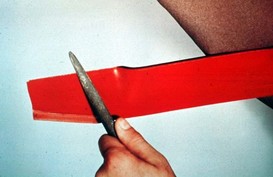
Orchardgrass in Tall Fescue Lawns
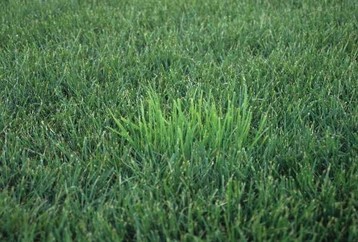
Orchardgrass often comes in as a contaminant in grass seed, especially K-31 tall fescue. Buying good grass seed is the first line of defense against this weed. Orchardgrass is a pasture grass and therefore is not found in the “weed seed” portion of the seed label. Rather, orchard- grass will be listed as “other crop seed.” Try to buy grass seed that has 0.0% “other crop seed.”
Control options are few and painful. Use glyphosate (Roundup, Killzall Weed and Grass Killer, Kleeraway Systemic Weed and Grass Killer and others) to spot spray orchardgrass clumps. Any lawn grasses you hit will be killed, so keep the spots sprayed as small as possible. Wait until the spots have turned brown and then cut out the clumps and replace with a small piece of sod. Large numbers of orchardgrass clumps may mean it is more practical to kill the entire lawn and start over. This should be done in the fall rather than now.
For information on identification of orchardgrass, including images, go to:
http://kswildflower.org/grass_details.php?grassID=15 (Ward Upham)
Vegetables:
Fertilizing Cole Crops
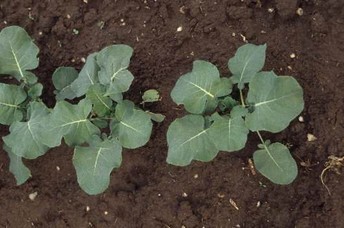
Use fertilizers high in nitrogen for sidedressing such as nitrate of soda or blood meal at the rate of 2 pounds per 100 feet of row. You may also use lawn fertilizers that have close to 30 percent nitrogen such as a 30-3-4 or 29-5-4 but the rate should be cut in half to 1 pound per 100 feet of row. Do not use lawn fertilizers that have weed killers or preventers. Fertilizer must be watered in if timely rains don't do that job for you.
We have a sheet available that gives recommendations on how to sidedress specific vegetable crops. It can be found at:
http://www.hfrr.ksu.edu/doc1991.ashx (Ward Upham)
Fruit:
Fertilizing Strawberries and Brambles
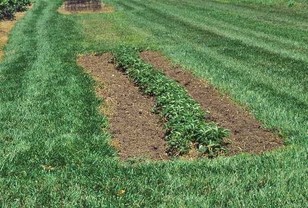
Strawberries (June-Bearing): June-bearing strawberries are not fertilized in early spring as this can make the berries soft and more prone to rot. Fertilize at renovation and again in late August to early September. In most cases, strawberries need primarily nitrogen, so the recommendations are for a high nitrogen fertilizer such as a 27-3-3, 29-5-4, 30-3-3 or something similar. Though recommended for lawns, these fertilizers will also work well for strawberries as long as they do not contain weed killers or crabgrass preventers. Apply ½ cup for every 10 feet of row. Note: For more information on renovating strawberries, see http://www.hfrr.ksu.edu/doc3732.ashx
Strawberries (Everbearing or Day-Neutral): Fertilize in the spring as growth starts and again in early August. Use the rates recommended for June-bearing strawberries. Everbearing (dayneutral) strawberries are not renovated.
Brambles (Blackberries and Raspberries): In most cases, brambles need primarily nitrogen, so use a high nitrogen fertilizer such as a 27-3-3, 29-5-4, 30-3-3 or something similar unless a soil test directs otherwise. Though recommended for lawns, these fertilizers will also work well as long as they do not contain weed killers or crabgrass preventers. Apply ½ cup for every 10 feet of row. Fertilize in spring as growth begins. (Ward Upham)
Fruit Tree Sprays and Rain
Pests:
Asparagus Beetles
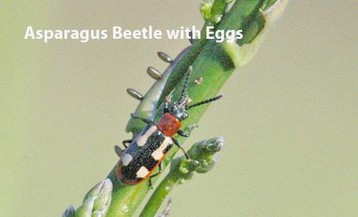
Early control of beetles is important to reduce feeding damage later. Sevin will provide control (a one-day wait before harvest is required). Some products with permethrin are also labeled but require a 3-day waiting period between spraying and harvest. (Ward Upham)
Contributors: Ward Upham, Extension Associate
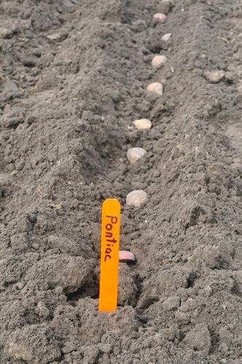
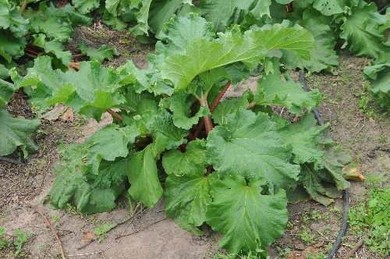
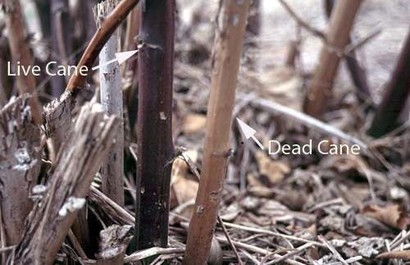
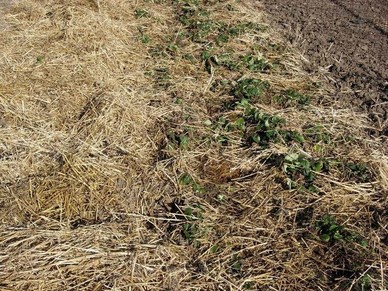
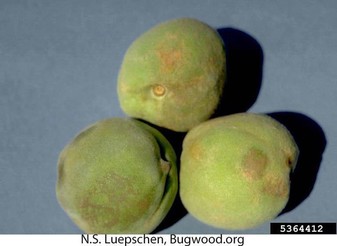
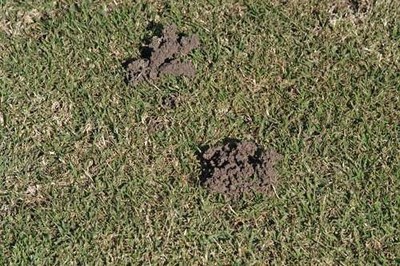
 RSS Feed
RSS Feed
